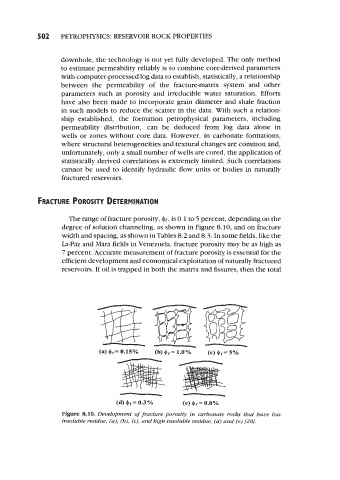Page 535 - Petrophysics
P. 535
502 PETROPHYSICS: RESERVOIR ROCK PROPERTIES
downhole, the technology is not yet fully developed. The only method
to estimate permeability reliably is to combine core-derived parameters
with computer-processed log data to establish, statistically, a relationship
between the permeability of the fracture-matrix system and other
parameters such as porosity and irreducible water saturation. Efforts
have also been made to incorporate grain diameter and shale fraction
in such models to reduce the scatter in the data. With such a relation-
ship established, the formation petrophysical parameters, including
permeability distribution, can be deduced from log data alone in
wells or zones without core data. However, in carbonate formations,
where structural heterogeneities and textural changes are common and,
unfortunately, only a small number of wells are cored, the application of
statistically derived correlations is extremely limited. Such correlations
cannot be used to identlfy hydraulic flow units or bodies in naturally
fractured reservoirs.
FRACTURE POROSITY DETERMINATION
The range of fracture porosity, $f, is 0.1 to 5 percent, depending on the
degree of solution channeling, as shown in Figure 8.10, and on fracture
width and spacing, as shown in Tables 8.2 and 8.3. In some fields, like the
La-Paz and Mara fields in Venezuela, fracture porosity may be as high as
7 percent. Accurate measurement of fracture porosity is essential for the
efficient development and economical exploitation of naturally fractured
reservoirs. If oil is trapped in both the matrix and fissures, then the total
-
(a) +,= 0.15% (b) +f= 1.0% (c) +f= 5%
- -
(d) +r= 0.3% (e) Qr = 0.8%
Figure 8.10. Development of fracture porosity in carbonate rocks that have low
insoluble residue, (a), (b), (c), and high insoluble residue, (d) and (e) 120J.

